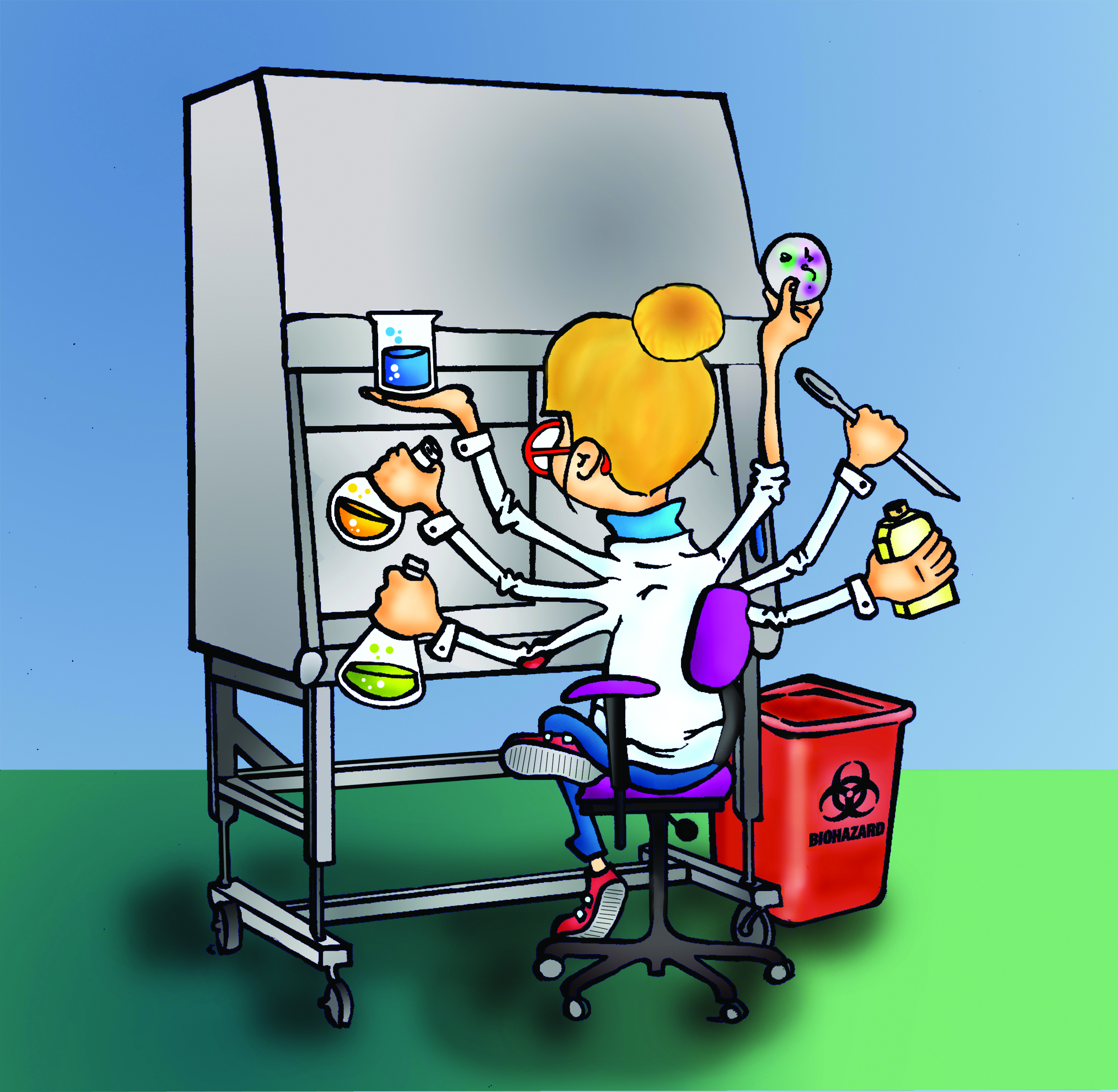Last time we explored cell splitting and the errors involved in the process. Today, we will look at how cell splitting can be applied to attaining experimental data. Experiments involving drug treatments utilize the technique of cell splitting to better understand how a cell (and, ideally, an organism) responds to certain doses, concentrations, and combinations of drugs.
The past couple weeks have been devoted to growing up various cells and splitting them to generate enough cells to work with for the desired experiment: treating the cells with drugs. But how many of the cells will need to be used for the experiment? How do we know that we’ve even grown enough cells? Before we get down and dirty with the physical portion of the experiment, we first need to crunch some numbers.
Generally, these experiments are performed in 96-well plates, where 100 microliters (µl) of solution are added to each well. We need to conduct a simple calculation to determine the concentration of cells we are adding to the wells before plating the cells. To do this, we use a cell counter.
When the cells merge together and are thus confluent, trypsin is administered, and the cells are centrifuged and resuspended, just as with the initial steps for cell splitting. The difference is that once the cells are resuspended, a small sample is mixed with a specific dye that tests for viability of the cells, and the mixture is placed onto a cell counting slide. The slide is inserted into a cell counting machine, and after waiting for less than a minute the results are in!
The cell counting machine provides the total and live counts of cells, as well as the per cent viability, which can be used to determine the volume of cells needed to fill all the relevant wells of however many of the 96-well plates are being utilized.
Once the correct concentrations of cells are determined, the amount of cells needed for the experiment is calculated, and the cells are added to the wells of the plate, or “plated.” The cells are then left to grow until they reach the appropriate confluence to work with.
The largest issue involving this procedure is having to play the waiting game. Every different cell line grows at a different pace. Just as plants bud at different rates (e.g., weeds will grow rather quickly whereas roses take much longer to mature), different cell types vary in their rates of growth. As such, it is important to be aware of these specific characteristics with the cell types you are working with.
There are times when a cell type does not grow as expected. For example, one might think that a week would be plenty of time to grow enough cells to fill five 96-well plates for a certain experiment. As it turns out, on the day that the cells are counted (the day that you expect to plate the cells), there are sometimes not nearly enough cells to run the experiment. What else can be done other than wait for the cells to grow? Nothing, really. Just wait. The cells will be ready – but not today.
Problems may also arise if the samples of cells are lost, either through misconducted aspiration or through something as simple as knocking the sample tubes over with your elbow. Once the cells are gone, they’re gone. The situation is nothing like in undergraduate labs, where when something is spilled or lost, you can borrow an extra sample from a partner across the room, or perhaps ask the TA for additional samples that are stored for such an occasion. Not so, in the life of a researcher.
The experiment must be started from the beginning. Cells must be thawed from the –80 C environment at which they are stored, and split until there are enough cells to conduct the desired experiments. That cell splitting process may take several weeks, depending on how quickly your specific cells grow, and how many cells you require for your experiment.
Accidents such as these are very costly. Knowing this provides an appreciation for how much preparative energy is put into undergraduate labs, where accidents happen all of the time.
We will continue with the remainder of drug additions in the coming week, after our plated cells are confluent.


